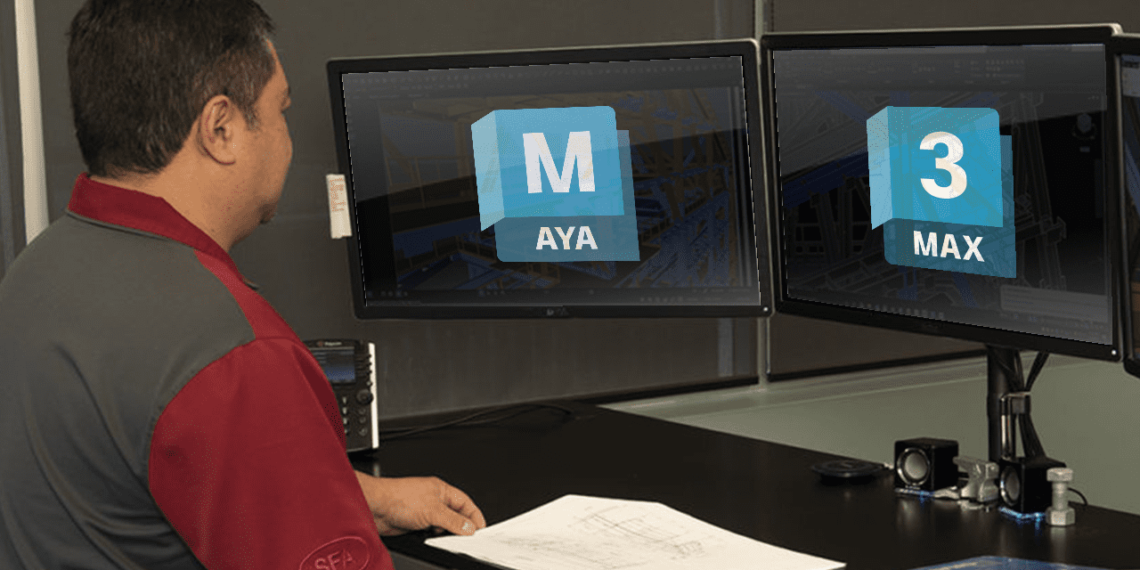For architectural visualizers, there are many rendering programs that offer a very sophisticated set of tools that provide professionals with the ability to be the best at what they do. ArchViz tools are very important for architects and designers since they allow them to more accurately identify problems in the developmental stages of a design as well as more effectively communicate design ideas with clients.
In today’s article, we will see two pieces of software in a new head-to-head comparison: 3Ds Max vs Maya for architecture in particular, since we already posted a general ultimate comparison that touches all the aspects.
3Ds Max vs Maya for architecture: why does it matter?
Architectural rendering software allows you to create 2D and 3D images of an architectural design. Architects and interior designers use architectural rendering software to enhance their designs and create a more realistic representation of what their final design may look like.
The main difference between architectural rendering software and 3D rendering software is that architectural rendering tools provide specific functions for architectural visualization such as interior and exterior rendering. Here is our list of 3D software comparisons:
- 3Ds Max VS Blender
- 3Ds Max VS SketchUp
- 3Ds Max vs Cinema 4D
- Houdini vs Maya
- Maya vs Blender
- 3Ds Max VS Maya VS Blender
- Maya vs 3Ds Max vs Cinema 4D vs Houdini vs Blender
Additionally, architectural rendering software is often integrated alongside building design and building information modeling (BIM) software to create a more comprehensive tool for architectural design. 3Ds Max and Maya have advanced architecture and design toolboxes, that offer you everything you need to support your architectural visualization needs. Let’s dive into details to see 3Ds Max vs Maya for architecture.
1. 3Ds Max software

3Ds Max is a modeling piece of software. It is used to create renders and animation. The software can be used in architecture visualization, interior design, and video game creation.
3Ds Max offers multiple good features. It is a versatile software, and it can work on 2D drawing, 3D modeling, 3D games creation, animation and rendering, physical simulation, and video content.
Official website: 3Ds Max
2. Maya software

Maya is a 3D modeling software; it allows you to do rendering, animation, and simulation. It is one of the best 3D software in the market. The software offers multiple useful features and tools, such as auto-rigging, hypershade tool, and fluid effects.
Official website: Maya
3. 3Ds Max vs Maya for modeling
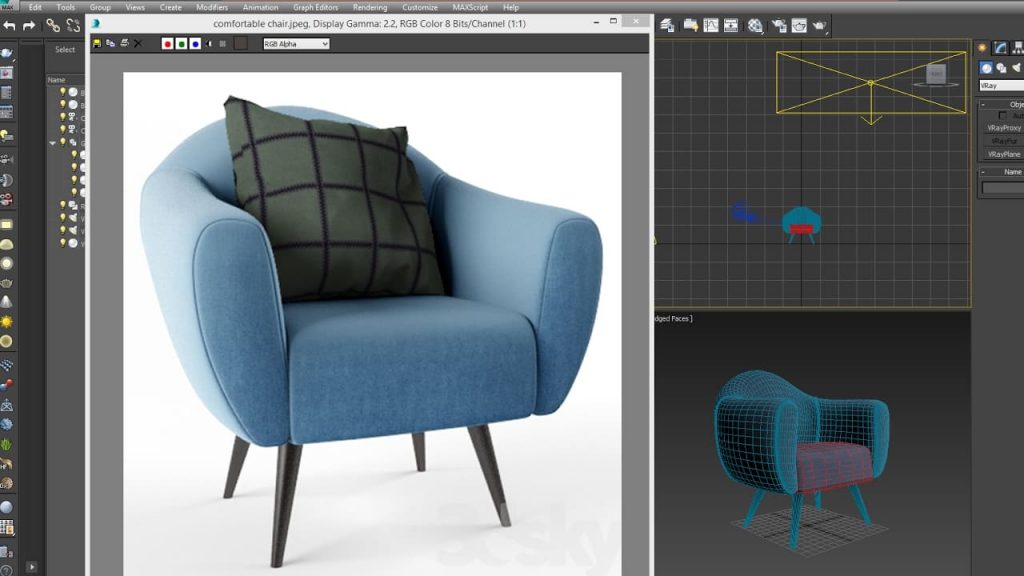
Looking at the potential of 3Ds Max vs Maya for modeling in particular, we can notice a few nuances.
3Ds Max is very flexible software. You can use it to model any shape you want. It’s a great piece of software to transform your ideas and imagination into reality. 3Ds Max has no limits, and it can be used in simple and complex projects. It can generate geometric or even organic forms. Modeling in 3Ds Max takes a lot of time, so it is always better for you to import a 2D plan from different software and extrude the 2D drawing into a 3D model.
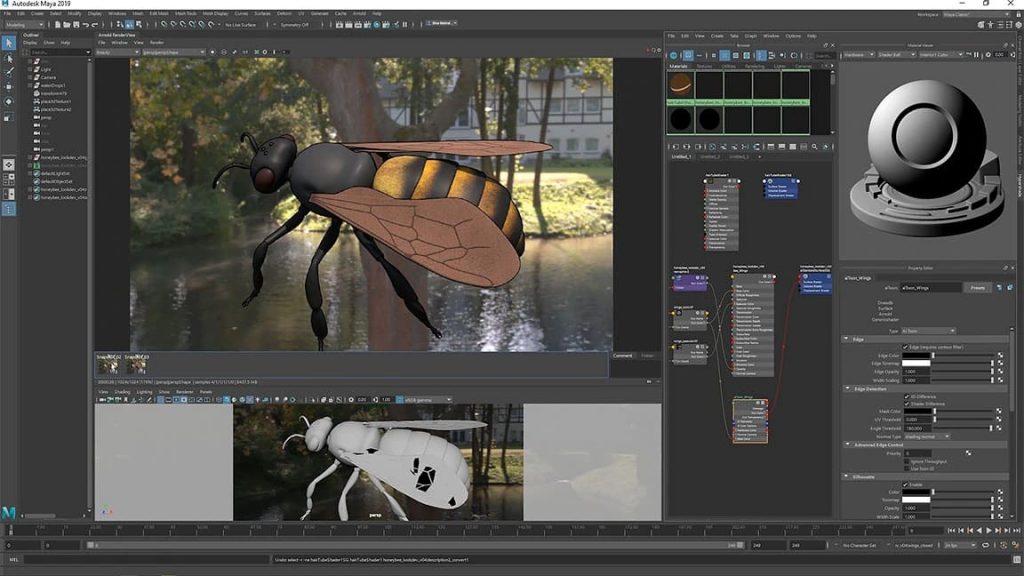
Maya is a powerful software in visualization; you can create interior design renders, landscapes, architectural objects, and realistic scenes for buildings and interiors. You can also add different types of effects, such as fluids, grass, vegetation, smoke, and fire.
Maya shows huge importance to details in the work as the level of details is incredibly important to get realistic results. Maya provides you with a smooth skinny feature that allows you to create smooth, articulated deformation effects.
4. Rendering engines/rendering
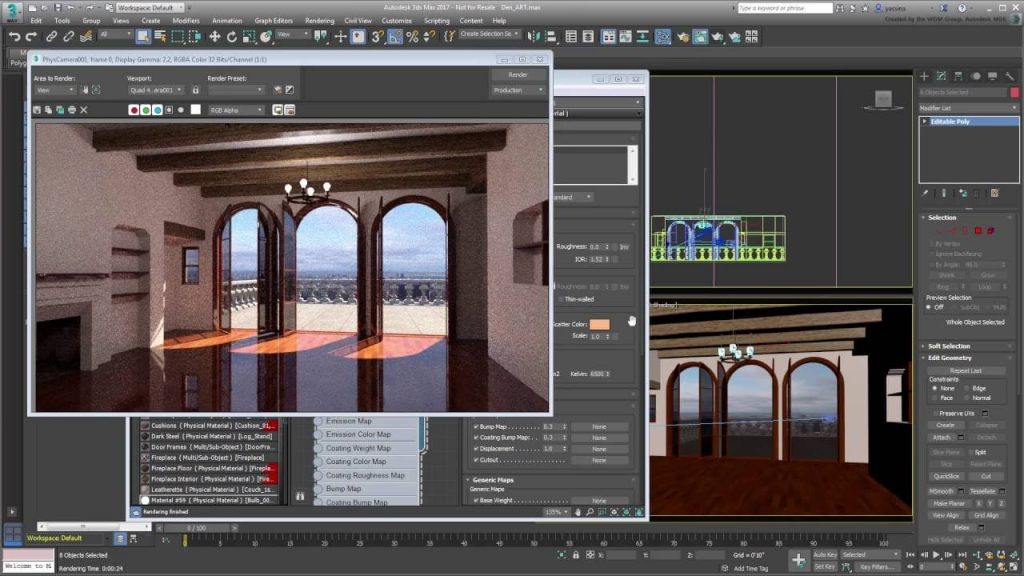
3Ds Max has major capacities in terms of rendering. It is also known for the time-saving process in animation and also has mapping workflow tools. 3Ds Max uses multiple rendering engines to render; it generates realistic renders with high quality. The software offers you the option to change the background and the environment before rendering and to set up some rendering options like the size and the quality of the render.
In addition to other settings, such as reflection, motion blur, and shadows. 3Ds Max is compatible with multiple rendering plugins that you can use according to the nature of your work. The most well-known rendering plugin for architecture is V-ray. It is very powerful, and it offers realistic results. You can also use Arnold render, which made a lot of progress, and it is now considered one of the best rendering plugins. Corona and Octane and other rendering engines can also be a great choice to use, and they are available online.
Rendering an animation in 3Ds Max is the same as rendering an image: you should set up the software to render a sequence of frames, and then choose the format of the animation as MOV or AVI.
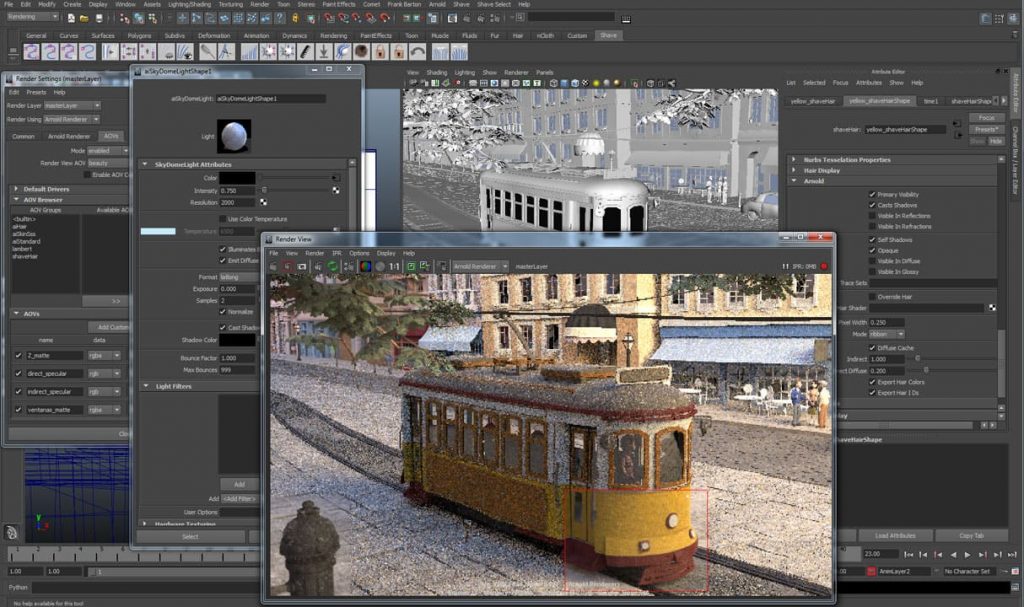
As for Maya, when you are done with texturing, adding lights, adjusting the camera, and making scenes. You can render your scene and select the rendering tool to open a render settings window. You can then specify the name of the file, the format, and the resolution.
It is possible to render one single frame at a time or multiple frames interactively. Maya is a very powerful rendering software; it uses both CPU and GPU rendering engines. The software is also compatible with multiple rendering plugins, such as V-ray, Octane renders, and Arnold.
As for animation, it has the same process, but you need to make sure that you have a powerful computer because this process is time-consuming. You also need to make sure that all the materials and textures are in place, and that the lighting is perfectly set up. The good thing about Maya is that you can visualize a single frame, a part of the animation, or a whole animation before launching the final render.
5. Materials/Material editor
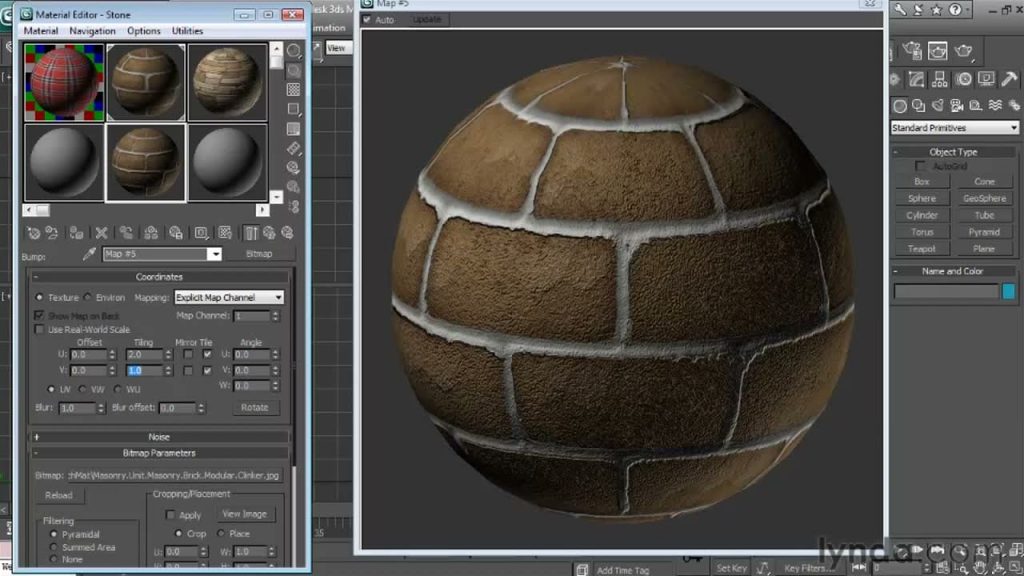
3Ds Max has a rich library full of materials. You can find all sorts of materials: stone, metal, wood, ceramic, fabric …etc. Materials are very important when you want to have a realistic render. You can manage the reflection of the light, the colors, and the textures. The software uses the drag and drop method so it is pretty easy to apply materials.

Maya has a large selection of different types of materials:
- Lambert, which is a flat material type; it generates a smooth appearance without specular highlights.
- Phongs takes into consideration the specular reflectivity to create highlights across an object’s surface.
- Ocean shader has several items in the shaders attribute to control how the material behaves over time.
You also have ramp shader, Blinn, Anistropic, and Tip. For more advanced purposes you have layered shader, shading map, surface shader, and use background.
6. Real-time rendering capabilities
The real-time rendering option has become a must-have in any rendering software. It allows you to interact with the work directly to reduce time and make sure the modifications added are well edited. Thanks to the interactive rendering engine in 3Ds Max, you can directly see the changes that you apply to your model. You can also edit lighting, camera, and scenes, instead of making a render every time and waste time. Also, it is a great option in case you have a meeting with a client; you can immediately modify it and show them the results.
Maya also comes provided with the real-time rendering option. This option offers you with seamless workflow. And to instantly make changes, the real-time rendering mirrors is the best choice as it allows you to have a faster interaction with your work, be more productive, and save time. You can also have a better design visualization and create a VR walk through your project.
7. The availability and power of add-ons/plugins
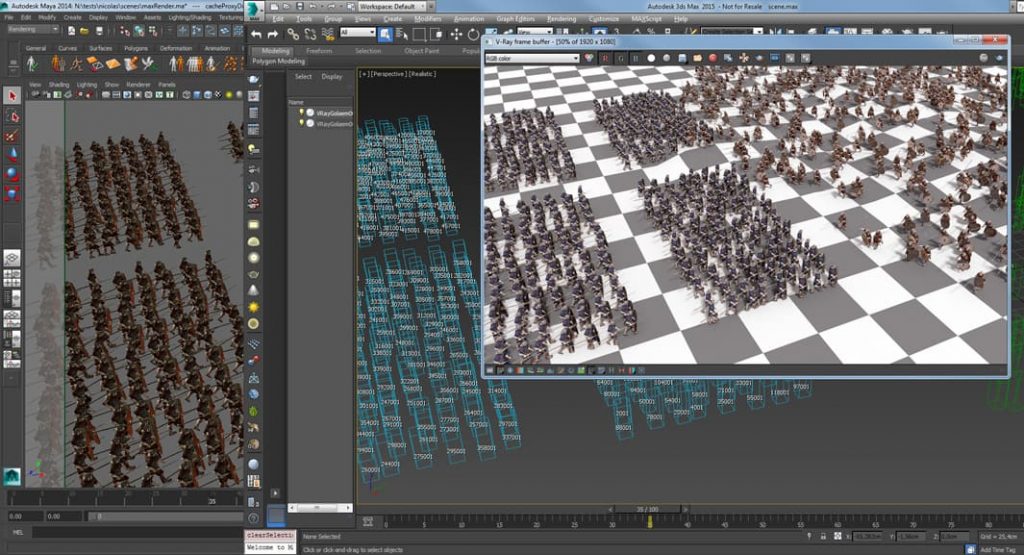
3Ds Max can be considered as complete software. But you can always improve your work with it by adding plugins, and you can customize your software as well.
You can find multiple types of plugins. A lot of companies compete to develop plugins compatible with 3Ds Max.
- One of the most useful and well-known plugins in the market is Cityscape pro; this plugin allows you to visualize your project in an immersive, vibrant city environment.
- Polysnow can help you create realistic snow with one click, it has 5 custom objects and 6 modified all to create snow. The plugin has a lot of parameters to set up in order to get realistic results of real snow.
- Rock generator allows you to get the shape of a rock; you can make plenty of types of rocks by editing parameters that come along with the plugin.
- You also have the Stone placement tool to generate different shapes for flooring and walls. The plugins offer multiple variations for this feature.
- Weave Mech helps you create fabric quickly and easily. You can edit the density of the weave and the shape of the thread.
- Nuts and bolts are used when you create metallic objects to have a realistic result. You can add nuts and bolts with one click.

The same thing for Maya. Although it is considered as complete software, flexible, and offers multiple features, you can always improve your workflow by adding plugins that will make your work easier and reduce your working time.
- You can use the studio library, which is a free plugin to manage poses in animation.
- BH ghost is used a lot in animation to allow you to alter or adjust an image based on the previous image.
- Maya bonus tool is a free plugin offered by the company. It allows you to benefit from extra free plugins and scripts. When you install the plugin, you will find an additional pull-down menu that contains multiple tools organized by function.
8. 3Ds Max vs Maya: Pricing & licensing
The price of 3Ds Max starts from $205 per month. The software does not have a free version. 3Ds Max is available on Windows, cloud-based, cloud, and Saas. You can pay a one-year subscription for $1620 or three-year subscription for $4375. It also offers a license for students. 3Ds Max is a very heavy piece of software, and it demands a high-performance computer with a strong processor.
3Ds Max has a great supporting team from Autodesk in case you need help or recommendations. 3Ds Max is destined for students, small businesses, and big companies. It has a large range of different categories of clients.
Maya’s pricing starts from $215 per month, $1700 per year, or $4590 per three years. If you use the annual subscription, you can save 34% from the monthly subscription. The software works on Windows, Mac, and Linux.
Final thoughts
We hope you found this article useful and informative, comment below if you think that we’ve missed something or if you have any other suggestions. Thank you for reading.


























